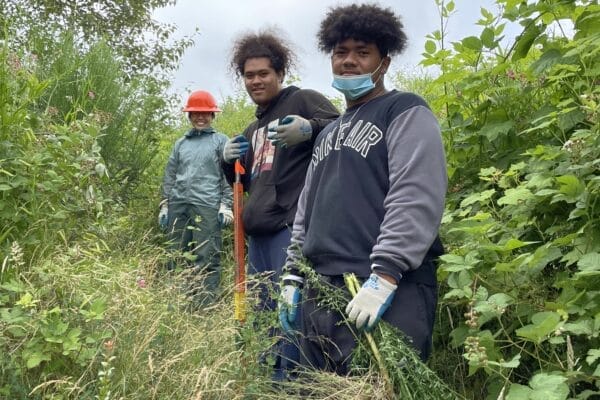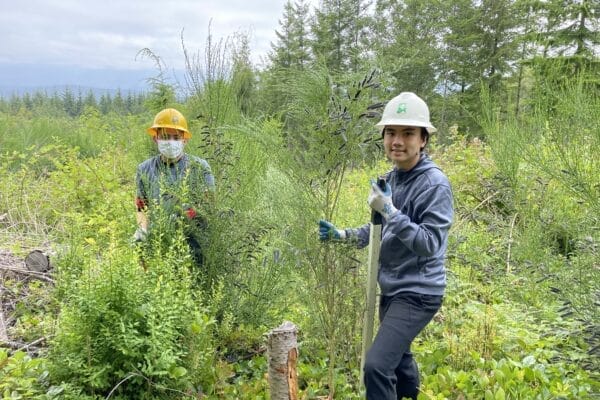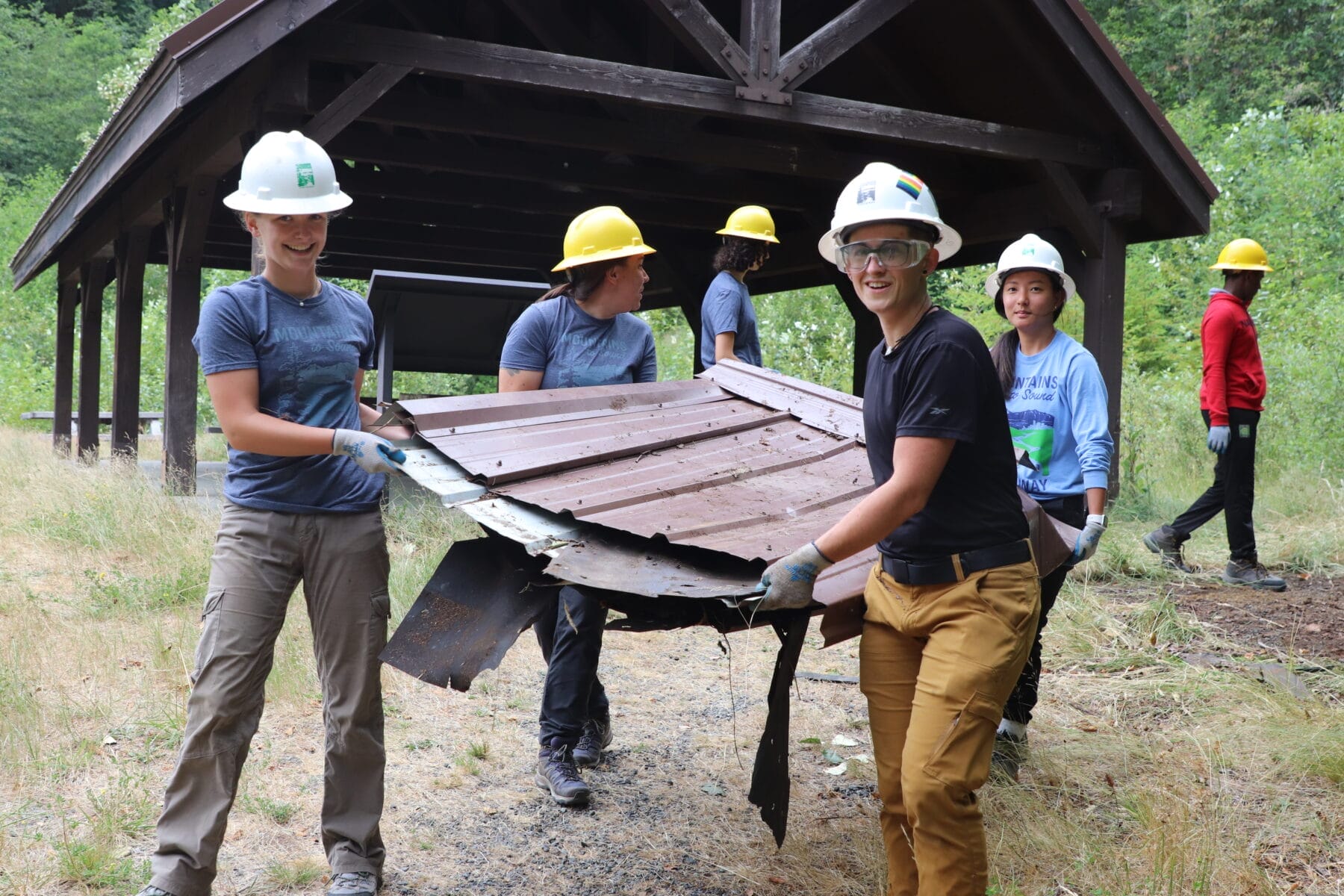Greenway Youth Program “EGOYH” Launches
This past summer, twelve high school students participated in the Greenway’s newest youth program, Equitable Green Opportunities for Youth in Highline – shortened to EGOYH (e-GO-yah). We launched this program in partnership with the Highline School District and Pacific Education Institute with the goal of inspiring and equipping students to pursue careers in natural resources, conservation, and related fields. The students earned graduation credit and a stipend while getting real-world restoration ecology experience and working alongside land manager professionals.
The program was piloted intentionally with the Highline School District, one of the most diverse school districts in the county, as a method of increasing equity and access to a field that has been, and still is, closed off to diverse and underserved communities. The reasons that individuals who are Black, Indigenous, or People of Color have been historically underrepresented in natural resource fields are complex. The authors of Barriers and Perceptions of Natural Resource Careers by Minority Students published in the Journal of Environmental Education, 2015, found a relationship between the likelihood of a student pursuing a career in natural resources and how much time they spend outdoors [citation]. Environmental education programs like EGOYH are key stepping stones for students to help them build confidence and foundational knowledge needed to choose conservation-related post-secondary education programs and careers.
Environmental Careers: Equitable Access and Knowledge
The E in EGOYH stands for Equitable. So how does this program advance equity?
Nearly half of the school districts in Washington State, including Highline, are low-income. Students from low-income families are more likely to need to earn income during their summer break. To alleviate this barrier, we paid each EGOYH student a stipend of up to $1,800 and provided lunches, bus cards, personal protective equipment, and footwear as needed. These benefits helped ease common barriers to student participation in summer learning opportunities and helped substantiate the experience as a “real job.”
We structured the program around skills that are valuable for entry level positions in natural resources fields. Many natural resources employers require a four-year college degree for entry level positions. However, the 2017 Washington Student Achievement Council found that 57% of Washingtonians 18 years and older do not have a degree beyond high school. That percentage increases when desegregated for race and ethnicity: 67% Blacks, 70% for Pacific Islanders, 78% for Latinos, and 77% for American Indians. [citation] So, we created a Document of Competency (a record of skills offered through this program and the student’s individual assessment of each skill) and had it vetted by agency partners. Students can use this document to demonstrate to potential employers what they learned by participating in EGOYH.

Students Across the Greenway!
Land management professionals from the US Forest Service, the Washington State Department of Natural Resources, and the cities of Burien and Seattle contributed to the success of this program by working alongside the students on restoration projects. In addition to their primary work sites, including Salmon Creek Ravine in Burien, the students also visited Discovery Park and Daybreak Star in Seattle, Snoqualmie Point Park, Lake Sammamish State Park, and the Middle Fork Campground. While out with DNR and USFS, the students were able to get a taste of trail maintenance by re-graveling steps or fixing well-loved trails. Monzerrath (student) said one of the highlights was “exploring Washington more, even though I’ve lived here my whole life… just going different places and seeing how beautiful it is outside.” We loved being able to share these parks and natural spaces with the students.
What did the students do for six weeks?
EGOYH students covered a lot of ground – literally and figuratively! Starting in late June, our students spent six weeks learning through a combination of classroom and outdoor activities across the western half of the Greenway. They covered a wide range of topics, including plant identification, weed removal, and job and interview skills. The first week found them building foundational knowledge at the Waskowitz Environmental Leadership Schools (WELS) in Burien with Highline School District teachers. For the remaining five weeks, they spent one day in the classroom and four days in the field, doing a blend of hands-on restoration work and field activities with Washington Service Corps AmeriCorps and Greenway Trust staff members.

Hoang said the amount of teamwork involved surprised him, but that it made the program more fun.
Although the restoration work was challenging at times, the students found it to be rewarding overall. Whether they were pulling out a carpet of ivy as a team or grubbing blackberry roots, seeing the before and after was satisfying (Hoang, student). Harkush (student) shared that his highlight was trail work because of the immediate change. Field activities like stream surveys to learn about salmon habitat and riparian systems helped students learn why ecological restoration is so important and the various ways we can work together to make the environment healthier. They applied their new knowledge and skills to creating restoration proposals that future stewards can use to improve the ecological health of Salmon Creek Ravine in Burien. These proposals included identifying native and introduced species and the issues within their sites, but also what the solutions could be. They also created a preliminary budget for the entire projects.
Biggest Takeaways
Something that stuck out for most of the students was the opportunity to Get out and Greenway! Monzerrath (student) said she chose this program because it was a good chance to be out in nature instead of watching TV at home. Other students, like Jaden, said they enjoyed this program as an opportunity “to get to know new people and work with them.”

Our intention is to increase access for high school students to a pathway to green careers by expanding EGOYH into other school districts, where we have secured funding for the next two years! EGOYH in Highline is supported by the King County Wastewater Treatment Division, the King County Flood Control District, the Snoqualmie Watershed Forum, the Green Duwamish Watershed (WRIA 9), the No Child Left Inside grant program (through the Washington Recreation and Conservation Office), and the Russell Family Foundation.
As a conservationist, what’s one of the most rewarding feelings for you? For me, it’s seeing all the work being done and being able to share the passion I have for this work with others, hopefully inspiring them into action.
Want to learn more? Check out the video below that talks about our first year.





